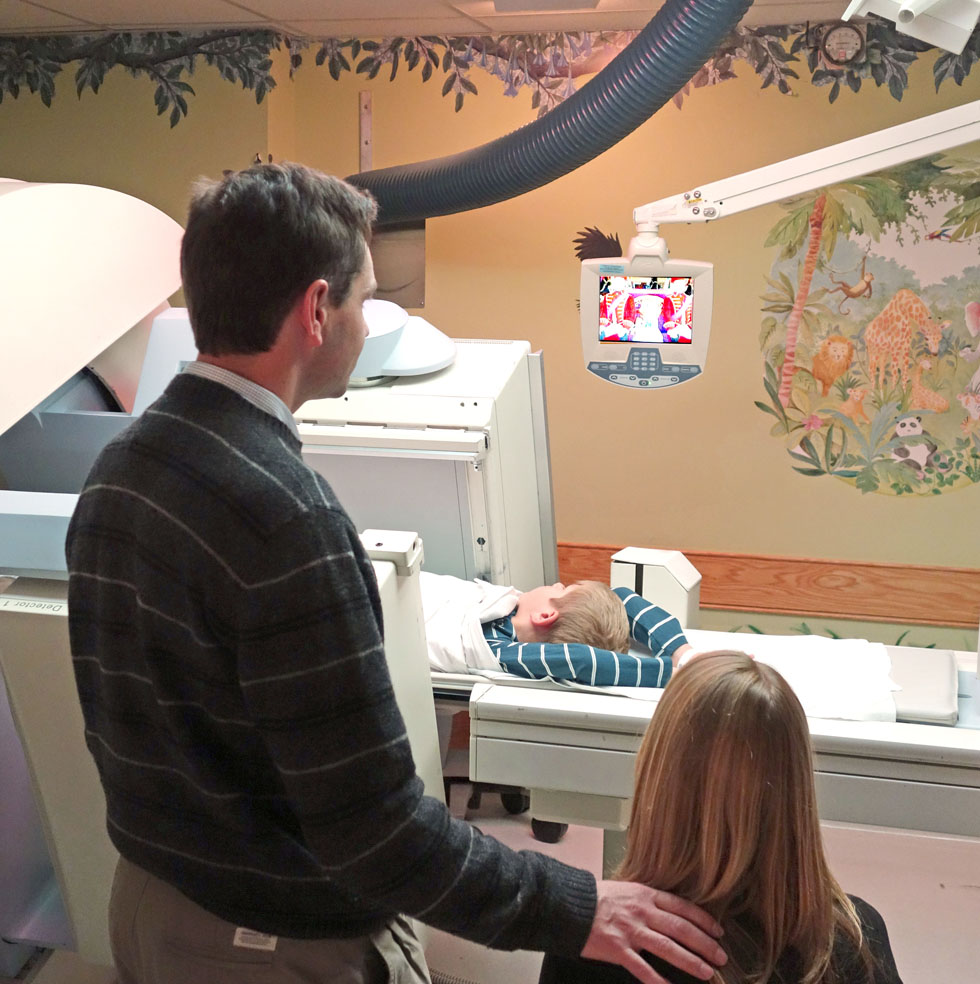 Nuclear Medicine: What can I do as a parent?
Nuclear Medicine: What can I do as a parent?
Be Your Child’s Champion! It is now possible to “child-size” the amount of radiation used for any nuclear medicine test. There are many ways to decrease the radiation dose in children without reducing the quality of the images. Ask questions to your pediatrician or radiologist/nuclear medicine physician, and tell them about this website.
What is Nuclear Imaging and Molecular Imaging?
Nuclear imaging is a type of test used by physicians where small amounts of special substances caller “radiotracers” or “radiopharmaceuticals” are used to look at the different organs of your child’s body and how they are working. These substances are usually injected into the blood and travel to different parts of the body to show the problem to the doctor. Nuclear medicine tests give information different from CT scans, MRI or x-rays. They provide images of how your body is working rather than what it looks like. Nuclear medicine tests can sometimes detect medical problems before they are seen with other types of medical tests.
Nuclear medicine drugs can also be used for treatment of some types of cancers and thyroid problems.
Molecular imaging is a medical field that looks at different diseases down to the level of the functions of cells and molecules. A disease can be diagnosed and treated better according to how it acts in each person’s body.
To learn more, visit the website of the Society of Nuclear Medicine and Molecular Imaging (SNMMI).
• Commonly done nuclear medicine tests in children
• What You Should Know About Radiation and Nuclear Medicine (PowerPoint presentation prepared by Dr. Frederic Fahey DSc, FACR, FAAPM)
FAQs
• Additional reading material and resources
RadiologyInfo.org - the informational website for patients
hps.org/publicinformation - Health Physics Society Public Information Page
www.SNMMI.org/dose - Society of Nuclear Medicine and Molecular Imaging
Note to physicians and other caregivers: The documents found on these pages may be downloaded and reproduced at your institution. You may affix your logo with the designation "printed courtesy of X."